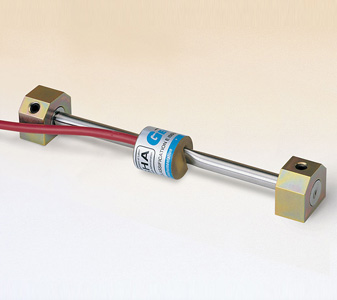
Arc Weldable Strain Gages
Geokon 4000 Vibrating Wire Strain Gage is designed primarily for arc welding to steel structures such as tunnel linings, excavation bracing, piles and bridges. The gage has a 150 mm gage length (longer or shorter versions are also available), a 3000 µε range and a 1 µε sensitivity. The gage can be adapted for bonding to concrete or for bolting to steel surfaces by modification of the end blocks.
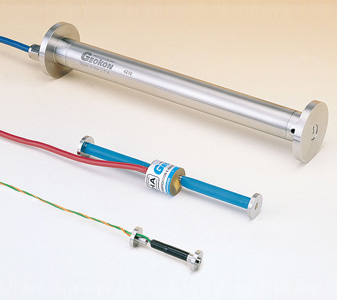
Concrete Embedment Strain Gages
Concrete Embedment Vibrating Wire Strain Gages are designed for direct embedment in concrete.
Geokon 4200 (standard model) has a 153 mm gage length and 1 με sensitivity and is commonly used for strain measurements in foundations, piles, bridges, dams, tunnel linings, etc.
Geokon 4210 has a 250 mm gage length making it particularly suitable for use in large aggregate concrete.
Geokon 4202 is designed for laboratory use and/or where there are space limitations. Low modulus versions, for measuring concrete curing strains, are also available.

Displacement Transducers
Geokon 4420 Crackmeter is intended to measure movement across surface cracks and joints. It is installed by grouting, bolting, or bonding two threaded anchors (with ball joints) on opposite sides of the crack and then attaching the ends of the gage to the anchors.
Geokon 4425 Convergence Meter is used to monitor closures in underground excavations, tunnels, etc. It is comprised of a spring tensioned transducer, turnbuckle, connecting rod (stainless steel, fiberglass or graphite), rod clamp, and a pair of stainless steel eyebolts.
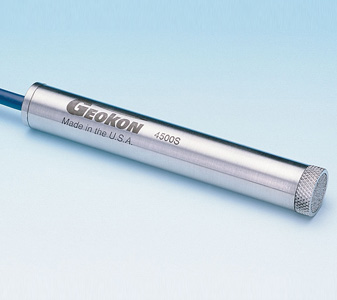
Piezometers
Geokon 4500 Standard Piezometer is designed to measure fluid pressures such as ground water elevations and pore pressures when buried directly in embankments, fills, etc. Also for installation inside boreholes, observation wells and standard (>19 mm diameter) piezometer riser pipe.
Geokon 4500SH is designed with a heavy duty housing for pressures that exceed 3 MPa.
Geokon 4500AL is designed for low-pressure ranges. The vented version (ALV) provides automatic compensation for barometric pressure changes.
Thermistors are included to measure temperatures.
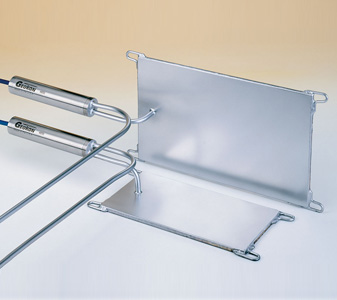
Pressure Cells
Geokon 4850 NATM Style Stress Cells are designed for the measurement of tangential (4850-1) and radial (4850-2) stresses in shotcrete tunnel linings. The cells consist of two rectangular steel plates welded together around the periphery with a de-aired fluid occupying the space between the plates. A short tube connects the cell to a vibrating wire pressure transducer. A prestressing tube is provided for expanding the cell after the concrete has cured. Cells of this type are also used for measurements of stress in mass concrete.
Geokon 4800 Earth Pressure Cells are designed to measure total pressure in earth fills and embankments. All cells consist of two circular stainless steel plates welded together around their periphery and spaced apart by a narrow cavity filled with de-aired oil. Changing earth pressure squeezes the two plates together causing a corresponding increase of fluid pressure inside the cell. A vibrating wire pressure transducer converts this pressure into an electrical signal which is transmitted to the readout location.
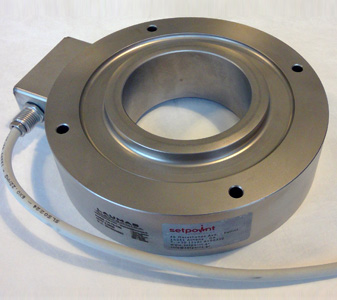
Load Cells
LAUMAS Load Cell is made from high-strength stainless steel, with electrical resistance strain gages in a Wheatstone Bridge configuration. LAUMAS Load Cells are used on tiebacks, rockbolts and during pile load tests. In many cases, the load cells are used in conjunction with bearing plates.
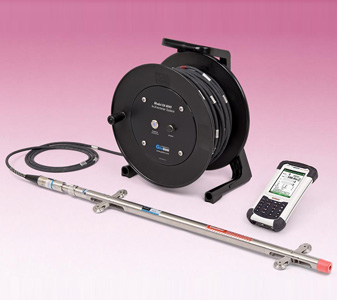
Inclinometers
Geokon GK-604D Digital Inclinometer System is delivered in its entirety and includes a Model 6100D Digital Inclinometer Probe, a reel-mounted cable and a Field PC. The Model 6100D contains electronics to convert the analog voltage into a digital signal, which is transmitted by the control cable to the cable reel containing the Interface, which communicates via Bluetooth® to the Model FPC-1 Field PC. A Digital Compass is built into the Inclinometer Probe to correct the inclinometer data sets for any twist (or spiraling) in the inclinometer casings. The spiral survey data is presented on (and stored in) the same FPC-1 Field PC used for taking inclinometer readings.
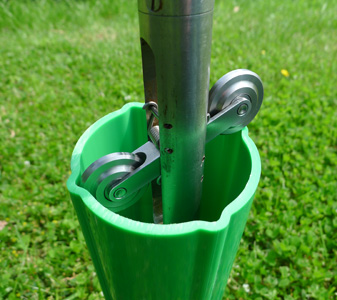
Sireg Inclinometer Casing
Sireg produces both ABS and PVC inclinometer casings in different diameters and thicknesses which have the function to drive the slope indicator into the soil. The inclinometer measurements allow to monitor the horizontal movements of soil, rocks and reinforced concrete structures.
The main application fields are:
- Monitoring of the stability of slopes, landslides, buildings, dams.
- Measurement of deformation of retaining structures such as berlinoises, diaphragm walls, piles.
- Measurement of soil deformation near tunnels.
- Verification of diaphragm walls verticality.
The inclinometer casings must be made tight seal to the soil or to the structure to be monitored, typically by cementation of the borehole in which they are inserted, in such a way that the casing can follow the movement of the surrounding environment. At each step of measurement, the probe gives the sine of the angle in one or two directions. The profile of the borehole is thus obtained and, through the comparison among the different readings in the time, you can see the possible movements. For a better precision, a double measurement is carried out rotating the probe by 180°.
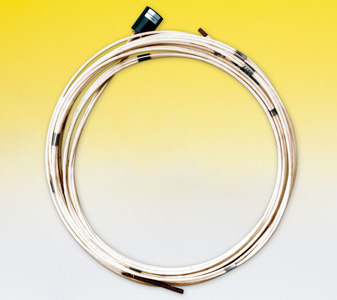
Multipoint Extensometers
Multiple Point Borehole Extensometers are used primarily for measuring displacements or deformation in grouted boreholes in soil, rock and concrete structures. A series of borehole anchors, installed at different depths, each with a measurement rod attached leading to the surface, enable the amount of movement in each inter-anchor zone to be measured.
Geokon A-6 Flexible Rod Extensometer uses continuous lengths of fiberglass rods (inside protective tubing), cut to customer-specified lengths, coiled at the factory and shipped ready for installation. The extensometer is lightweight, making it easier to handle for installation and less costly to ship. On-site assembly time is minimal and the installation procedure is simplified.
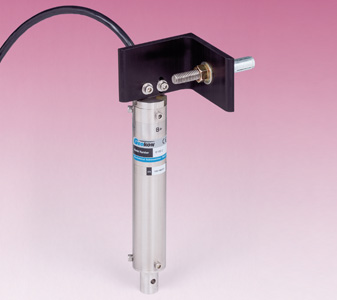
Tiltmeters
Geokon 6160 MEMS Tiltmeter is designed for attachment to structures, on either a vertical or horizontal surface by means of an adjustable bracket, and for the subsequent measurement of any tilting that may occur. The Tiltmeter itself contains a Micro-Electro-Mechanical Sensor and associated signal conditioning, designed to drive long cables without output signal degradation. The sensor has excellent reliability and stability over time and temperature, and outstanding shock and overload durability.
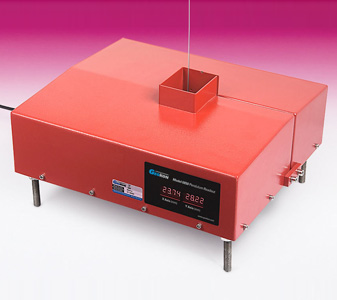
Pendulum Readout
Geokon 6850 Pendulum Readout is designed to make accurate measurements of the relative movements of normal and inverted pendulums, such as those found in dams, and can be installed as a new system or as an electronic upgrade for an existing system. Two 2-D models are available: 50×50 mm and 50×100 mm; and one 3-D model: 50×100×50 mm.
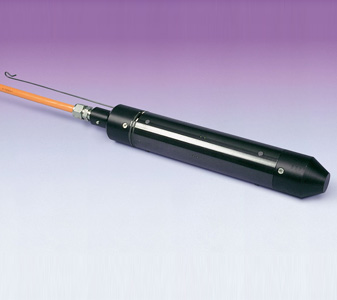
Biaxial Stressmeter
Geokon 4350 Vibrating Wire Biaxial Stressmeter is designed to measure compressive stress changes in rock, salt, concrete or ice. Three or six Vibrating Wire sensors oriented at 60° intervals allow the principal stress changes to be measured in the plane perpendicular to the stressmeter axis. The stressmeter consists of a high strength steel cylinder which is grouted (or frozen, in the case of ice) into a BX (60 mm) size borehole.
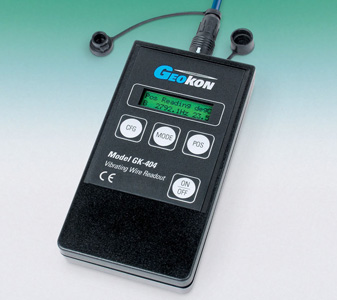
Readouts
Geokon GK-404 Vibrating Wire Readout is a portable, low-power, hand-held unit that is capable of running for more than 20 hours continuously on two AA batteries. It is designed for the readout of all Geokon vibrating wire gages and transducers, and is capable of displaying the reading in either digits, frequency (Hz), period (µs), or microstrain (µε). The GK-404 also displays the temperature of the transducer (embedded thermistor) with a resolution of 0.1°C.
Geokon GK-405 Vibrating Wire Readout is designed for use with all Geokon vibrating wire sensors. It comprises a battery-powered readout unit, which communicates, via Bluetooth® transmission, to a Handheld Field PC running the GK-405 application. The Model GK-405 can also read the thermistors included with most Geokon vibrating wire sensors, and display the temperature directly in °C. Syncing to a host computer is simple and straightforward, allowing project folders and data files to be easily saved.

Dataloggers
The Model 8600 Series Dataloggers are designed around the Campbell Scientific, Inc. (CSI) Model CR6 Measurement and Control System. Although primarily manufactured for use with vibrating wire sensors and thermistors, the Model 8600 Series can be configured, at Geokon’s factory, to read MEMS sensors, Carlson type sensors, voltage type sensors, 4-20 ma sensors, and numerous other specialty sensor types. The Model 8600-1 and 8600-2 Dataloggers are housed in a NEMA 4X fiberglass reinforced polyester enclosure, designed for use in harsh environments with wide temperature tolerance, resistance to moisture and humidity and protection against lightning damage. The Model 8600-3 Datalogger is housed in a rugged, water-resistant PVC enclosure (stainless steel and fully waterproof enclosures are also available) together with a battery pack (for unattended operation) and an integral Spread Spectrum Radio (for wireless data transmission).
Campbell Scientifics’ new CR6 series measurement and control datalogger is a powerful core component for data acquisition. It combines the best features of all Campbell Scientific dataloggers and adds faster communications, low power requirements, built in USB, compact size, and improved analog input accuracy and resolution. The CR6 series also introduces Campbell Scientific’s new universal (U) terminal, an ingenious way for allowing virtually any sensor, analog digital or smart, to be connected to any U terminal. This is also Campbell Scientific’s first multipurpose datalogger capable of doing static vibrating wire measurements.
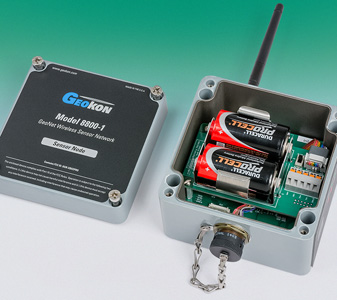
Wireless Datalogger Network
Geokon GeoNet is a low-power, wireless data acquisition network developed to more efficiently collect data from many points. The system consists of a Network Supervisor (8800-2) and up to 100 Single-Channel Sensor Nodes (8800-1). The supervisor controls the network and is the aggregator of all the data collected by the nodes. The system is compatible with all Geokon Vibrating Wire instruments.
GeoNet is built on top of the IEEE 802.15.4 standard. The network is self-healing and will reconfigure itself, if possible, to tolerate disturbances to the physical environment. This topology is more flexible than star networks, in that communication can be established around obstructions. Up to 12 networks can coexist by setting each to a different operating frequency (channel).
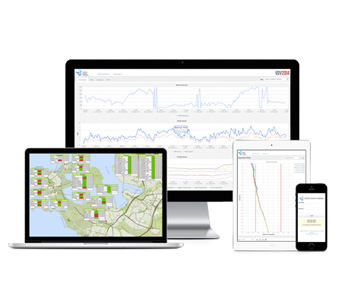
Software
Vista Data Vision (VDV) is an all included data management application for storing and handling data from dataloggers and other field devices. VDV offers storage of data, visualization by graphs, real-time monitoring and data tables, multiple alarm triggers, creation of calculated sensors, fast processing, configurable security access levels, automatic reports and comprehensive web service for projects of any size.
Most commonly, projects run on VDV include one to hundreds of dataloggers each connected to 10 or more sensors. It is not uncommon to have data from thousands of sensors stored and handled in VDV.
